Sensory Rooms for Children with Disabilities
A sensory room is a safe space that has been specifically designed for someone with neurodevelopmental or psychiatric conditions, such as a learning disability, anxiety, ADHD, autism, behavioral challenges, or mood disorders, but anyone with sensory processing impairments can benefit from them. The Children’s Guild provides individualized experiences for all learning and emotional levels with in-house clinicians and social workers as well as sensory rooms in a few of our schools.
Sensory rooms can include various stimuli that engage a person and help them manage stimulation. Everything usually is adjustable, and the room should be comfortable, dim, quiet, and secure so that the person can explore everything with a calm state of mind.
Sensory rooms are designed as a soothing environment where people are encouraged to build their confidence and learn new skills. They are also a peaceful refuge to go to when someone is feeling overstimulated or experiencing heightened emotions. Generally, all sensory rooms offer soft lighting, textures, sounds, and color schemes.
Sensory rooms help children learn how to interact with the world surrounding them in a safe way that offers consistency and holds no risk. The child gets free range in the area at their leisure. This freedom allows the teacher, therapist, parent, or caregiver to observe what the child does and does not find calming or exciting.
What Are the Benefits of a Sensory Room?
- Increases opportunities for socialization
Using a sensory room with others encourages the use of social skills in a safe, calm, and welcoming environment. Sensory rooms for disabled children may include cause-and-effect toys and games that promote turn-taking and interaction within the room.
- Improves movement, sense of orientation, coordination, and balance
Sensory rooms help each child work on their gross and fine motor skills. These skills are essential because they help day-to-day living. For example, tying shoes allows them to change locations and dress independently. Sensory rooms are also beneficial for children with additional physical difficulties because they can help with muscle tone and relaxation.
- Sharpens focus
Sensory toys and equipment are designed to help individuals concentrate on the activity they are engaged with. Every experience is accessible and soothing. This increases the child’s comfort, making it easier to stay focused. Concentration is essential for children to develop and cope with real-world situations.
- Helps decompress and unwind
Sensory rooms provide children with a much-needed moment of relief and refuge in case of overstimulation. Additionally, because of the safe and controlled nature of the room, those that isolate may feel comfortable and soothed enough to engage with their surroundings. If a child feels overwhelming emotions or experiences challenging behavior, the sensory room helps to recenter and ground them.
- Teaches through play
Many sensory rooms are designed with learning in mind, but parents and providers should also ensure fun is a priority. Sensory play aids children in developing their senses, problem-solving, and building nerve connections in the brain.
What to Keep in Mind When Building a Sensory Room at Home:
- Location
It is highly recommended that the room be away from the busy, noisy areas of the house. Windows are unnecessary because they are mostly covered with blinds or films to control the atmosphere. If there are windows, using blackout curtains and blinds is helpful.
- Size, Shape, Space
Plan out what you want to put in the room. Consider the size and shape of the room based on the toys, equipment, lighting, and specific needs of the children. Keep in mind having a little corner for pillows and blankets that can be designated as a mindfulness or meditation area is usually preferred.
- Ventilation and Temperature
Make sure that the room is breathable. Having a well-ventilated room that is heated and cooled as needed helps the individual and caregiver focus on the experience at hand and not on the environmental features of the room.
- Lighting and Sound
Avoid fluorescent light because it can emit an undesirable noise, which may increase stress in individuals. Soft, dimmable lights are typically a better choice for a sensory room. Sound insulation can help prevent unwanted noise. Sound insulation can be achieved by using various materials, thickening the walls, or even lining walls with sound-dampening materials.
- Colors
Avoid overly bright or neon colors for walls, floors, or equipment. You can be a bit more colorful when it comes to lighting. Pick the color scheme based on the calm mood you want to convey, and you can also add in your child’s favorite colors around the room.
- Floors
Select a floor coloring that can be used throughout the room. If you use wheelchairs in the room, select a durable floor where the wheelchair can move. Combine carpets and vinyl floors for tactile effects. Put a mat in the corner of the room and add lots of pillows for a lounging or mindfulness area.
Sensory Rooms in Schools
Does your child’s school have a sensory room set up? Would your young scholar benefit from time spent in this room? Let’s examine what makes a good sensory room for a school:
- Safe and secure. The room should be safe and secure, with no hazardous objects or potential dangers for children. The room should be equipped with childproof locks to prevent children from leaving the room without adult supervision.
- Sensory equipment. A variety of sensory equipment should be available, such as weighted blankets, sensory swings, trampolines, therapy balls, sensory tables, bubble tubes, tactile surfaces, and sound and light systems. This equipment should be age-appropriate and provide a range of sensory experiences.
- Calming colors. The color scheme of the sensory room should be calming and soothing, with soft and neutral colors such as blue, green, and beige. Bright and contrasting colors can be overstimulating and may cause sensory overload.
- Noise reduction. The room should be designed to reduce noise levels, with sound-absorbing materials, such as carpets, curtains, and acoustic panels. White-noise machines or calming music can also help to create a peaceful environment.
- Visual stimulation. The room should have visual stimulation, such as calming images, pictures, or videos that can be projected on the wall. This can help students to focus and reduce stress.
- Clear rules. Clear rules and guidelines should be established for the use of the sensory room. These should include expectations for behavior, length of stay, and adult supervision.
- Regular maintenance. Regular maintenance of the sensory room is essential to ensure that all equipment is functioning correctly and the room is clean, safe, and comfortable for students.
- Training for staff. Staff members should be trained in the use of the sensory room and how to support students with sensory processing difficulties. This can include strategies for managing challenging behaviors and identifying triggers for sensory overload.
By providing a well-designed sensory room, schools can create a safe and calming environment that helps students with sensory processing difficulties regulate their emotions and improve their academic performance. Ask your school counselor if this is available for your child!
___________________________
The Children’s Guild’s schools all offer sensory support for their students. The Children’s Guild maintains a staff of educators as well as physical and mental health providers committed to the growth of each child. See photos below of a sensory room from one of our schools in Baltimore, Transformation Academy!

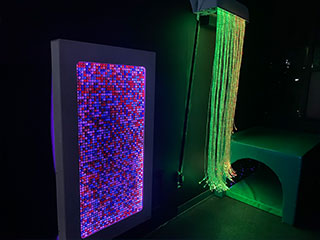
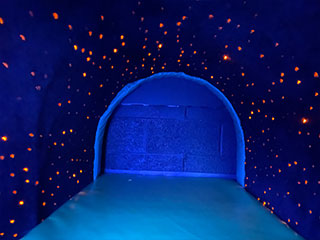

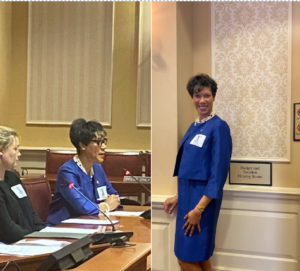 , families and communities served, but also for the teachers and staff that work with them.
, families and communities served, but also for the teachers and staff that work with them.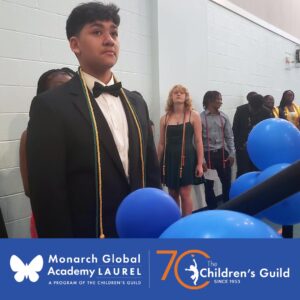

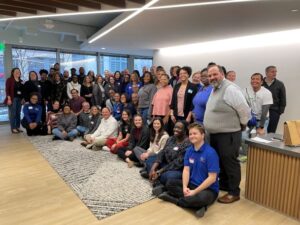 and developmentally through special education and charter schools, school-based mental health services, treatment foster care, autism services, family mental and behavioral health services, and workforce development programs.
and developmentally through special education and charter schools, school-based mental health services, treatment foster care, autism services, family mental and behavioral health services, and workforce development programs.








